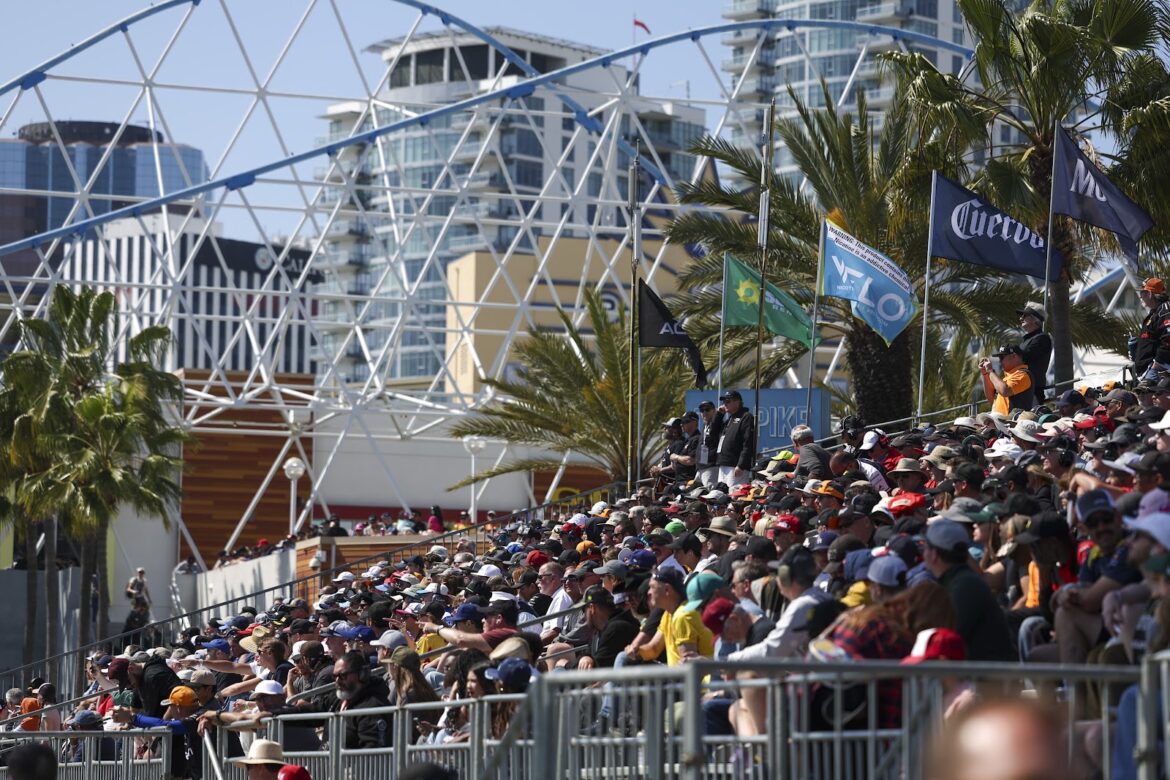Long Beach Grand Prix: A Look at the 50th Anniversary Race and Its Impact on Viewership
The 50th edition of the Long Beach Grand Prix, held on Sunday, April 13, 2025, marked a significant milestone for the IndyCar Series. This iconic street race, known for its picturesque views and thrilling competition, was broadcast live in the United States on FOX and in Brazil on TV Cultura, ESPN4, and Disney+. The event garnered an impressive 552,000 viewers in the U.S., representing a substantial 80% increase compared to the 307,348 viewers who tuned in for the 2024 race on the USA Network (NBC). However, despite this growth, the Long Beach race recorded the lowest viewership of the season so far and was the second consecutive race to fall short of one million viewers. This decline in viewership was anticipated, as the race coincided with the airing of The Masters, one of the world’s most prestigious golf tournaments broadcast on CBS.
The comparison to the season opener in St. Petersburg is striking. The inaugural IndyCar race on FOX attracted 1,417,000 viewers, reflecting a 46% increase over the previous year’s figures. Additionally, the special race held in Thermal, despite not awarding points and facing tough competition from March Madness and NASCAR on FS1, reached 704,000 viewers—an 11% decrease from the prior event.
Viewership Growth in Brazil
Turning the focus to Brazil, the Long Beach Grand Prix also registered a rise in viewership. According to statistics from the website Bastidores da TV, TV Cultura achieved a 0.5 rating in São Paulo, which translates to approximately 99,657 viewers who followed the IndyCar race that Sunday. This marks a significant growth of 66.6% compared to the 0.3 rating during the Thermal race, which represented around 59,794 viewers in the city.
It is important to note that TV Cultura does not have national coverage, unlike ESPN4 and Disney+, which also broadcast the IndyCar Series in Brazil and significantly broaden the audience reach. However, these platforms have not released official viewership data. For context, the Formula 1 Bahrain Grand Prix aired on Band the same day, achieving an average of 2.5 points, equating to 498,283 viewers in São Paulo.
While the viewership numbers for IndyCar are considerably lower than those for Formula 1, the upward trajectory indicates a growing interest among Brazilian fans. With the recent switch to FOX and the increased exposure through open channels, the IndyCar Series appears to be on the right path to expanding its fan base. The key challenge now lies in maintaining this growth trend throughout the remainder of the season, especially amid stiff competition from other sports leagues in major markets.
IndyCar’s Strategic Moves and Future Challenges
The shift to FOX represents a strategic move for IndyCar, aimed at reaching a broader audience and enhancing its visibility within the crowded sports landscape. The broadcast on a prominent network like FOX provides a platform that can attract new fans who may not have previously engaged with the series. The significant increase in viewership for the Long Beach race, despite being the lowest season figure, suggests that the series is successfully capturing the attention of a diverse audience.
As the IndyCar Series progresses, it will be crucial to maintain viewer interest and engagement. The upcoming races will benefit from the absence of direct conflicts with other major events, which should provide a clearer path for increased audience numbers. The ability to draw viewers consistently will be vital for the sport’s growth, especially as it competes with established leagues and events that dominate the sports calendar.
In addition to broadcast strategies, IndyCar must also consider the fan experience at races. Enhancing the on-site experience for attendees can lead to increased word-of-mouth promotion and a more robust fan community. Engaging with fans both at the track and through digital platforms can help foster a deeper connection with the sport, encouraging them to tune in for races and participate in discussions around the series.
The Role of Digital Platforms in Viewership Expansion
The landscape of sports viewership is rapidly evolving, with digital platforms playing an increasingly vital role in how fans consume content. While traditional broadcasting remains important, the rise of streaming services and online platforms can complement live events, offering fans more flexibility in how they engage with IndyCar.
For example, platforms like ESPN4 and Disney+ not only broaden the audience reach in Brazil but also offer fans the chance to catch up on races they may have missed. This flexibility is essential in an era where viewers have come to expect on-demand access to content. By capitalizing on these platforms, IndyCar can further enhance its visibility and accessibility, attracting a younger demographic that values convenience in their viewing choices.
Social media also serves as a powerful tool for engagement and promotion. By leveraging platforms like Twitter, Instagram, and Facebook, IndyCar can share real-time updates, behind-the-scenes content, and interactive features that keep fans informed and excited about the races. Engaging content can drive conversations and build a community around the sport, ultimately leading to increased viewership.
Looking Ahead: The Future of IndyCar Racing
As the IndyCar Series continues to navigate the complexities of viewership trends and fan engagement, the focus will remain on delivering thrilling races and a compelling narrative that resonates with audiences. With the Long Beach Grand Prix marking a significant moment in the series’ history, the challenge now is to sustain and build upon this momentum.
In summary, the Long Beach Grand Prix showcased both growth and challenges for IndyCar and its viewership. The increase in U.S. viewers, despite the impact of competing events, coupled with the rising interest in Brazil, highlights the potential for further expansion. The strategic decisions regarding broadcasting and digital engagement will play a crucial role in shaping the future of IndyCar racing as it seeks to capture the hearts of fans across the globe.
